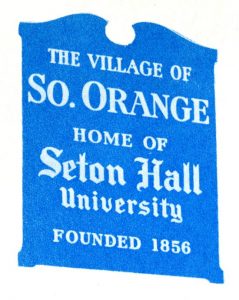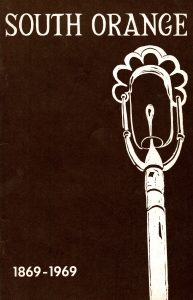Seton Hall has enjoyed a historical relationship with the Village of South Orange since the school established their campus within its boundaries after moving from nearby Madison in 1860. The original land which constitutes the present-day South Orange was purchased by Robert Treat (also acknowledged as the founder of Newark) from officials of the Lenni Lenape tribe around 1666. This led to official settlement by the Brown brothers (Joseph and Thomas) who built a farmstead along the present-day South Orange Avenue by 1680 that ultimately set the stage for the development of Setonia in due course.

Over the next few centuries this area experienced steady development in terms of a resort town during the 1800s and subsequent year-round residential growth. This was in large measure made possible when South Orange became a transportation hub for the Delaware, Lackawanna, and Western Railroad as of 1869 when the area was also incorporated as South Orange Township (that originally contained present-day Maplewood before this municipality became independent) and made for a prime destination that appealed to commuters, visitors, and students from across the metropolitan area. South Orange is also known for its distinctive gas light posts and these illuminations served a symbolic and practical purpose for both hometown citizens and those affiliated with the college. These milestones and others have led to many joint landmarks and project building initiatives over time.

Beyond this brief overview of local history, there are many layers of research potential that bond “town and gown” together including prominent individuals, property data, shared events, and many other topics of note. Specific examples of collections found within our repository include, but are not limited to various files related to past University Presidents, Velotto South Orange Postcard Collection, Our Lady of Sorrows Parish files, and many other examples found through our Rare Book and various manuscript-based holdings. More information and leads can be found via our homepage-based search engine – https://archivesspace-library.shu.edu/search?q[]=south+orange&op[]=&field[]=keyword&from_year[]=&to_year[]=&filter_fields[]=repository&filter_values[]=%2Frepositories%2F2
Along with our own resource base and work in preserving historical school records within the context of the town has been a constant. Research tools of various types are available within the University Libraries and through its book catalog, databases, and different electronic-based sites. Specialized connections have also been made with the South Orange Public Library, South Orange Historical Preservation Society, and other organizations and individuals around the area have provided valuable research connections over the years Further details can be located within a specially created Library Reference Guide devoted to South Orange resources found within the following link – https://library.shu.edu/south-orange

For more information on resources related to Seton Hall, South Orange, and other aspects of local history please feel free to contact Alan Delozier, University Archivist via e-mail at: Alan.Delozier@shu.edu or by phone: (973) 275-2378.
